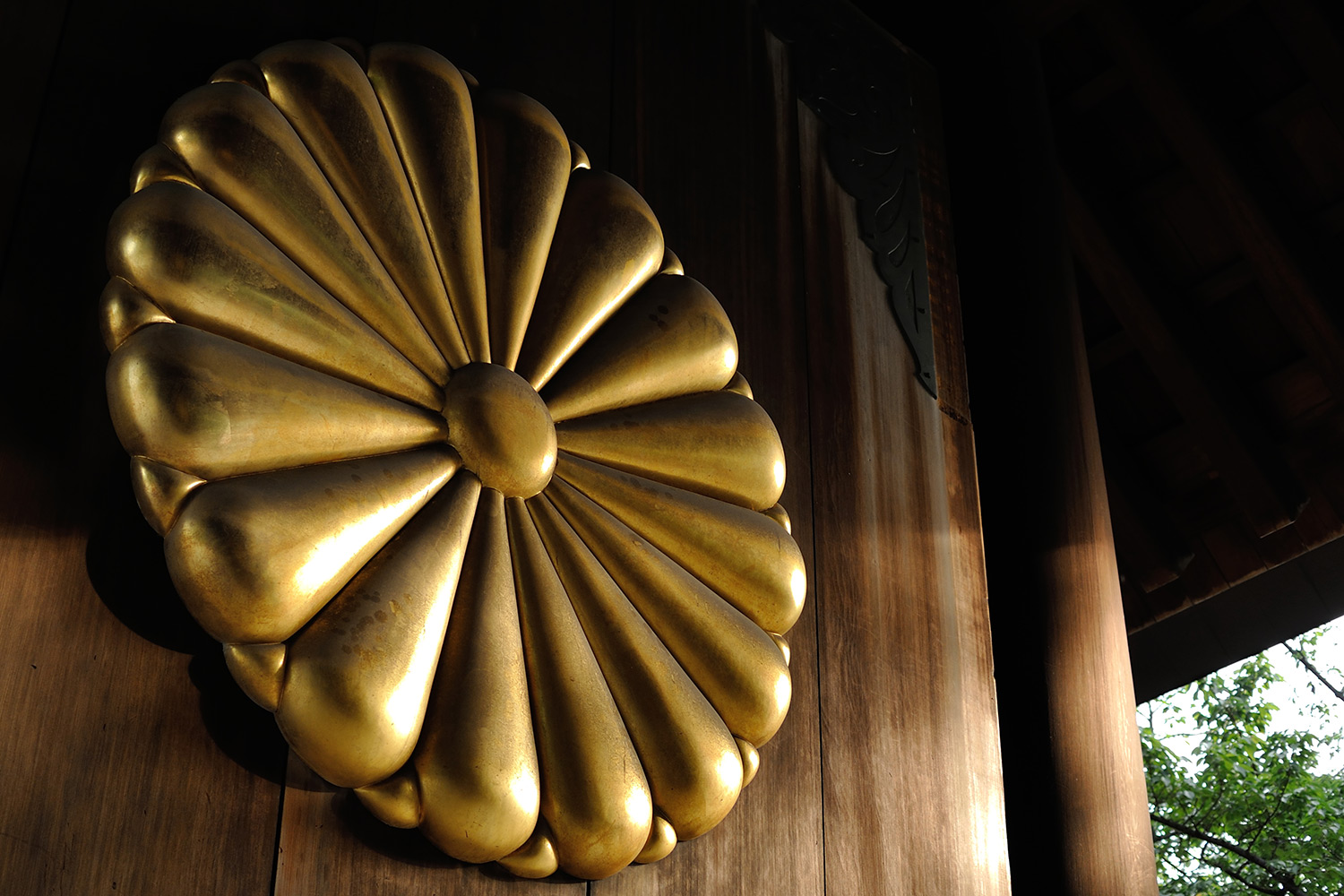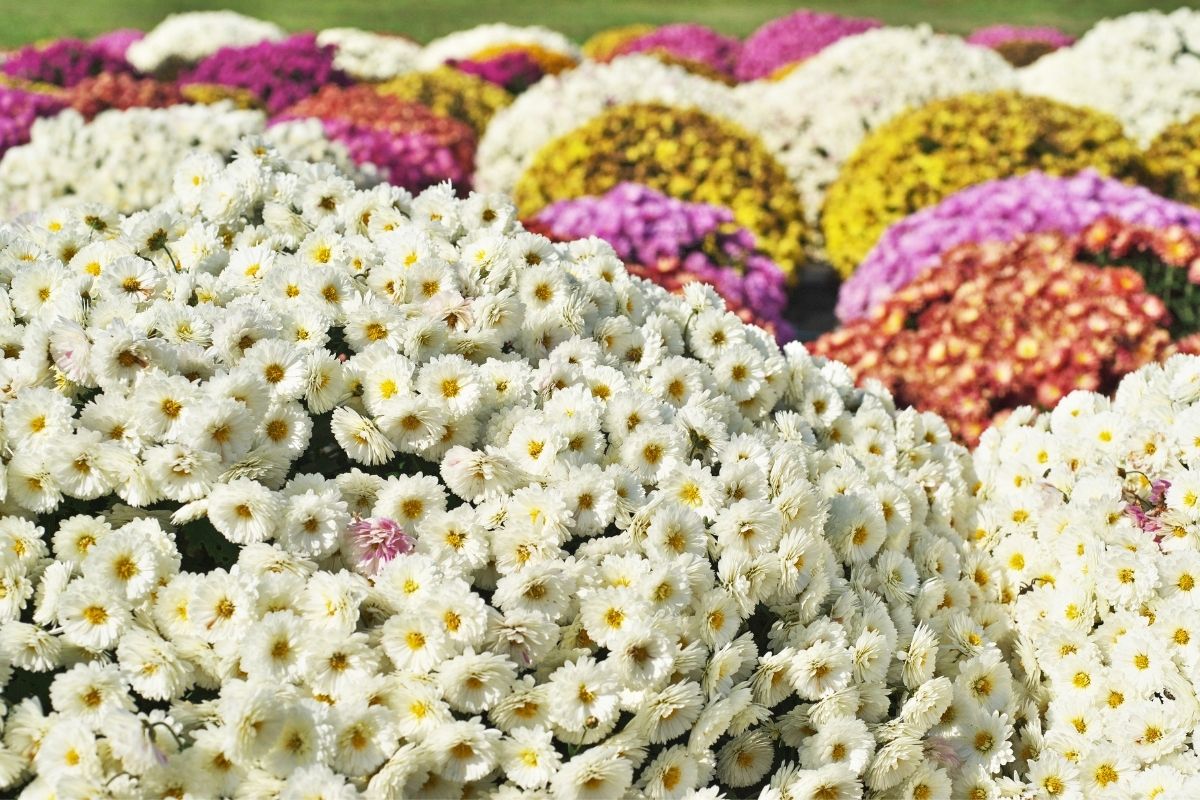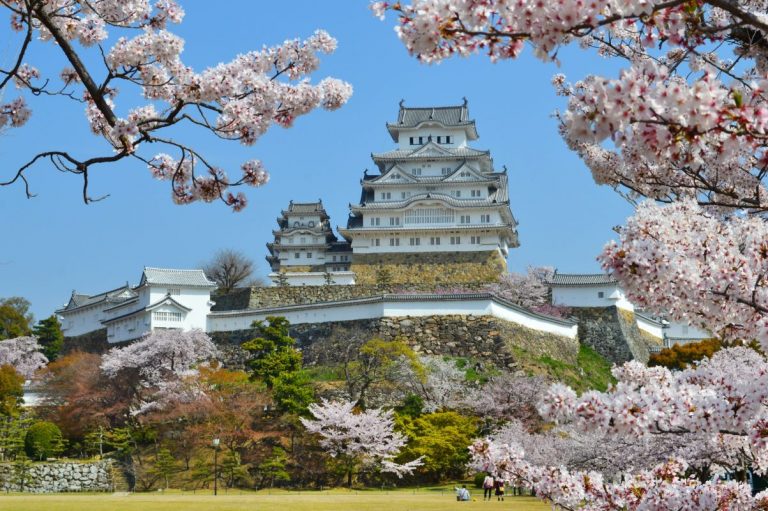If you had to guess what the national flower of Japan is, I’m sure many would say, “that’s easy. Cherry Blossom”. After all, the fleeting pink blossoms known as sakura are synonymous with Japan.
But you would be wrong.
What’s The National Symbol Of Japan?

The humble Chrysanthemum has been given the distinction of being named the official flower of Japan. This is because it is the symbol and Imperial Emblem of japan.
Next time you see a Japanese passport, you will notice that a Chrysanthemum symbol is clearly printed on the cover. You also see the symbol in Japanese embassies, Shinto shrines.
Why Is The Chrysanthemum The Symbol Of Japan?

This symbol has been around for centuries and can be traced back to the time of Emperor Go-Toba (1180 – 1239)
Just like Mom on Mother’s Day, the emperor was a fan of the Chrysanthemums and chose them for the official royal seal and emblem.
When the Chrysanthemum was first chosen for the Imperial Seal of Japan, some clans also cultivated it to show the emperor that his taste in flowers was top-notch and to indicate their support for the imperial family.
Why Is It Called The chrysanthemum Throne?
The Japanese imperial throne is sometimes called the chrysanthemum throne because the flower is the imperial household’s official symbol
When Did chrysanthemums first come to Japan?
The flower is said to have first appeared in the archipelago in the5th century from china.
Cultivation of the Chrysanthemum kicked off in Japan during the Nara era from710 and gained great popularity much later during the Edo Period.
Chrysanthemums In Modern Japan

In modern Japan, chrysanthemums still represent the emperor, the authority of the state, and the autumn season. The Japanese even have a festival to honor the national flower.
In the country, more than 350 types of chrysanthemums are known of the 200,000 varieties which are said to exist in the world.
Today, each fall, chrysanthemum displays are held at the Meiji Shrine and the Yasukuni Shrine in Tokyo. This last temple is of great national importance, so much so that it adopted the Chrysanthemum as its emblem.
Culinary-grade chrysanthemums are used to decorate food and are still a common motif for traditional Japanese arts such as porcelain and kimono-making.

